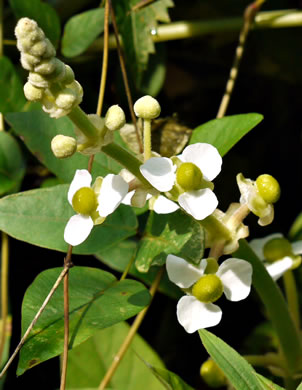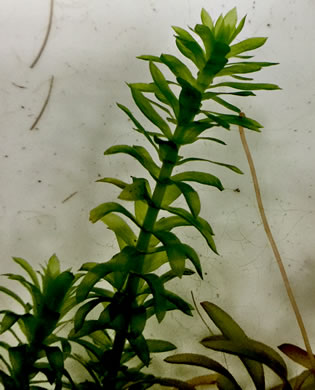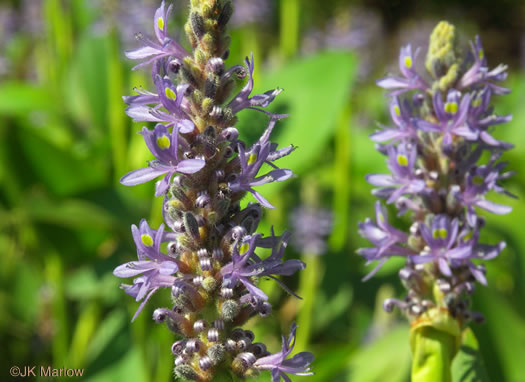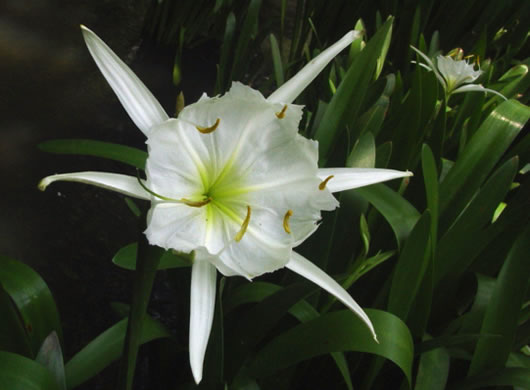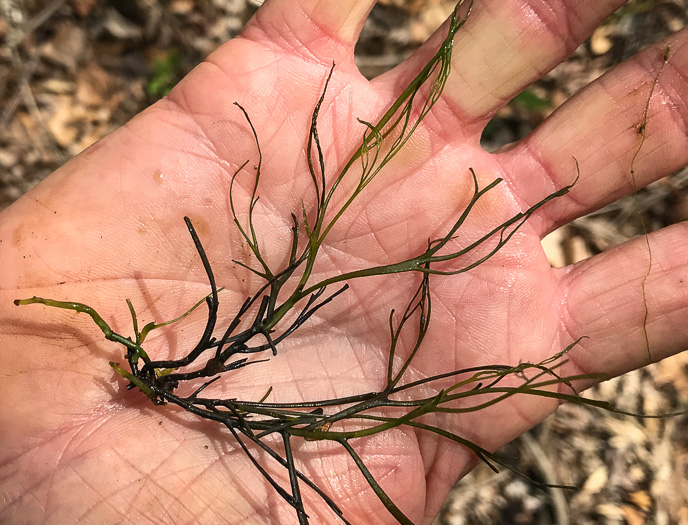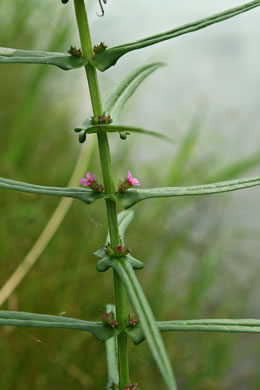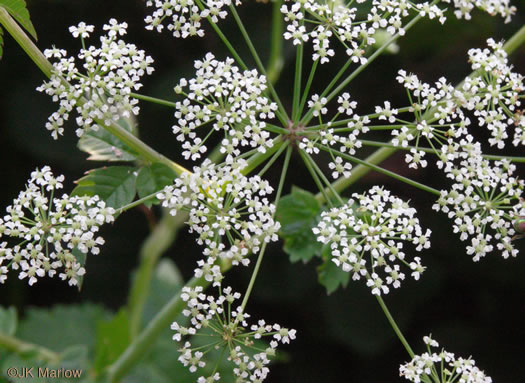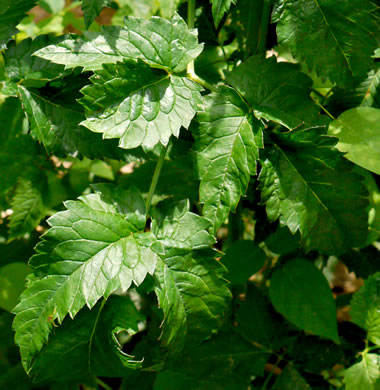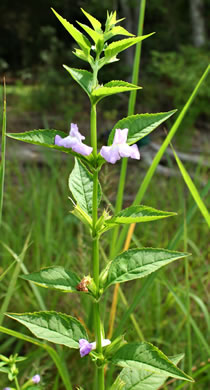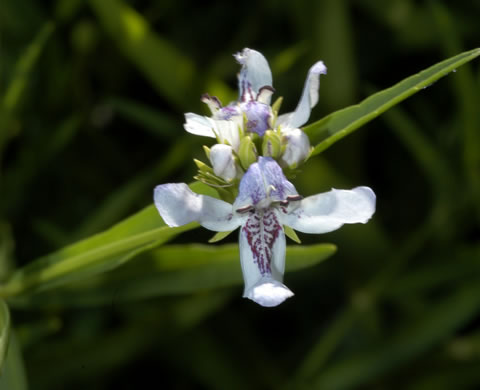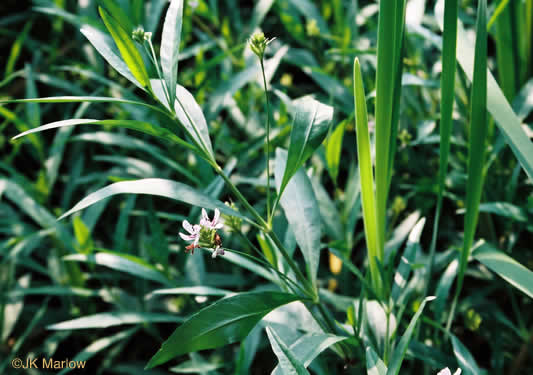South Carolina's Natural Wildflower Communities —
THE PIEDMONT:
The rocky shoals community
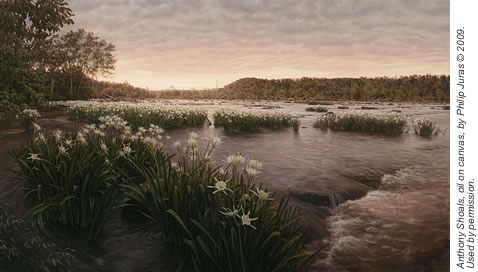
Rocky shoals
Rocky shoals are restricted to the upper and middle piedmont. The community is characterized by the abundance of small boulders or bedrock near the surface (shoals) during periods of low water flow. The shoals are mostly submerged during periods of high water flow Rocky shoals are most extensive near the fall line that separates the piedmont from the coastal plain on major rivers such as the Saluda, Savannah, Broad, and Congaree.
The rocky islands that are mostly submerged during high water are occupied by emergent aquatic or semiaquatic plants. Three species characterize this habitat:
rocky-shoals spiderlily (Hymenocallis coronaria),
American waterwillow (Justicia americana),
and riverweed (Podostemum ceratophyllum).
Riverweed, with its tiny dissected leaves and fleshy discs, which are used to attach the plant to submerged rocks, resembles an alga more than a vascular plant. Its flowers have no showy parts, and the plant must be viewed with a magnifying lens to fully appreciate its unusual nature.
Rocky-shoals spiderlily, often present in great abundance, with its five-foot stalks and large whitish flowers, is spectacular. In June of 1773, William Bartram, while at the shoals on the Savannah River at Augusta, stated, “nothing in vegetable nature was more pleasing that the odoriferous Pancratium fluitans [Hymenocallis coronaria of today’s taxonomy], which almost alone possess the little rocky islets which just appear above the water.” The greatest display of spiderlily today is at the rocky shoals of the Catawba River at Landsford Canal State Park.
A wide variety of rooted and emergent aquatics, species typical of marshy habitats or weeds typical of wet disturbed habitats, may be associated with the rocky shoals. These include
mermaid-weed (Myriophyllum spp.).
Brazilian elodea (Egeria densa),
pickerelweed,
water hemlock,
broadleaf arrowhead (Sagittaria latifolia),
cardinal flower,
red tooth-cup (Ammania coccinea),
winged monkey-flower (Mimulus alatus),
and a variety of rushes, sedges, spikerushes, and bulrushes.
South Carolina's Natural Wildflower Communities is adapted from A Guide to the Wildflowers of South Carolina by Richard D. Porcher and Douglas A. Rayner. Used by permission.
To see pictures or additional information about a particular plant, click its name or its picture.

